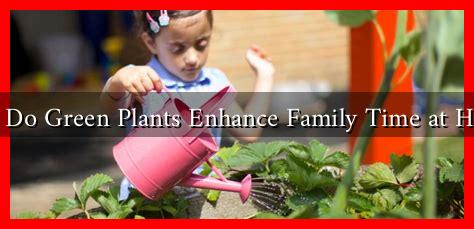-
Table of Contents
How Do Green Plants Enhance Family Time at Home?
In recent years, the importance of incorporating greenery into our living spaces has gained significant attention. Green plants not only beautify our homes but also play a crucial role in enhancing family time. This article explores the various ways in which green plants contribute to family bonding, emotional well-being, and overall home environment.
The Psychological Benefits of Greenery
Research has shown that being around plants can have a positive impact on mental health. A study published in the journal Environmental Science & Policy found that exposure to nature can reduce stress and anxiety levels. Here are some psychological benefits of having green plants at home:
- Stress Reduction: The presence of plants can lower cortisol levels, which are associated with stress. Families can enjoy a more relaxed atmosphere when surrounded by greenery.
- Improved Mood: Plants can enhance mood and promote feelings of happiness. This can lead to more positive interactions among family members.
- Enhanced Focus: Studies indicate that plants can improve concentration and productivity, making family activities like homework or game nights more enjoyable.
Encouraging Family Activities
Green plants can serve as a catalyst for family bonding activities. Engaging with plants can create opportunities for families to spend quality time together. Here are some activities that families can enjoy:
- Gardening Together: Whether it’s a small indoor herb garden or a backyard vegetable patch, gardening can be a fun and educational activity for families. It teaches children about responsibility and the life cycle of plants.
- Decorating with Plants: Families can collaborate on choosing and arranging plants in their home. This can be a creative outlet that allows everyone to express their personal style.
- Plant Care Routines: Establishing a routine for watering and caring for plants can foster teamwork and responsibility among family members.
Creating a Healthier Home Environment
Green plants are not just aesthetically pleasing; they also contribute to a healthier living environment. Here are some ways plants improve indoor air quality:
- Air Purification: Many houseplants, such as spider plants and peace lilies, are known for their air-purifying qualities. They can remove toxins and improve air quality, making the home a healthier place for families.
- Humidity Regulation: Plants release moisture into the air through a process called transpiration, which can help maintain optimal humidity levels in the home.
- Noise Reduction: Plants can absorb sound, making the home quieter and more conducive to family conversations and activities.
Fostering Educational Opportunities
Incorporating plants into the home can also provide valuable educational experiences for children. Here are some ways plants can serve as teaching tools:
- Biology Lessons: Families can learn about plant biology, photosynthesis, and ecosystems through hands-on experiences with their plants.
- Environmental Awareness: Caring for plants can instill a sense of responsibility towards the environment and promote sustainable practices.
- Cooking and Nutrition: Growing herbs and vegetables can teach children about healthy eating and the importance of nutrition.
Conclusion
Incorporating green plants into the home environment offers numerous benefits that enhance family time. From improving mental health and creating bonding opportunities to fostering educational experiences and promoting a healthier living space, the advantages of having plants at home are undeniable. As families seek ways to connect and create lasting memories, green plants can serve as a beautiful and functional addition to their lives. By nurturing both plants and relationships, families can cultivate a thriving home environment that supports well-being and togetherness.

